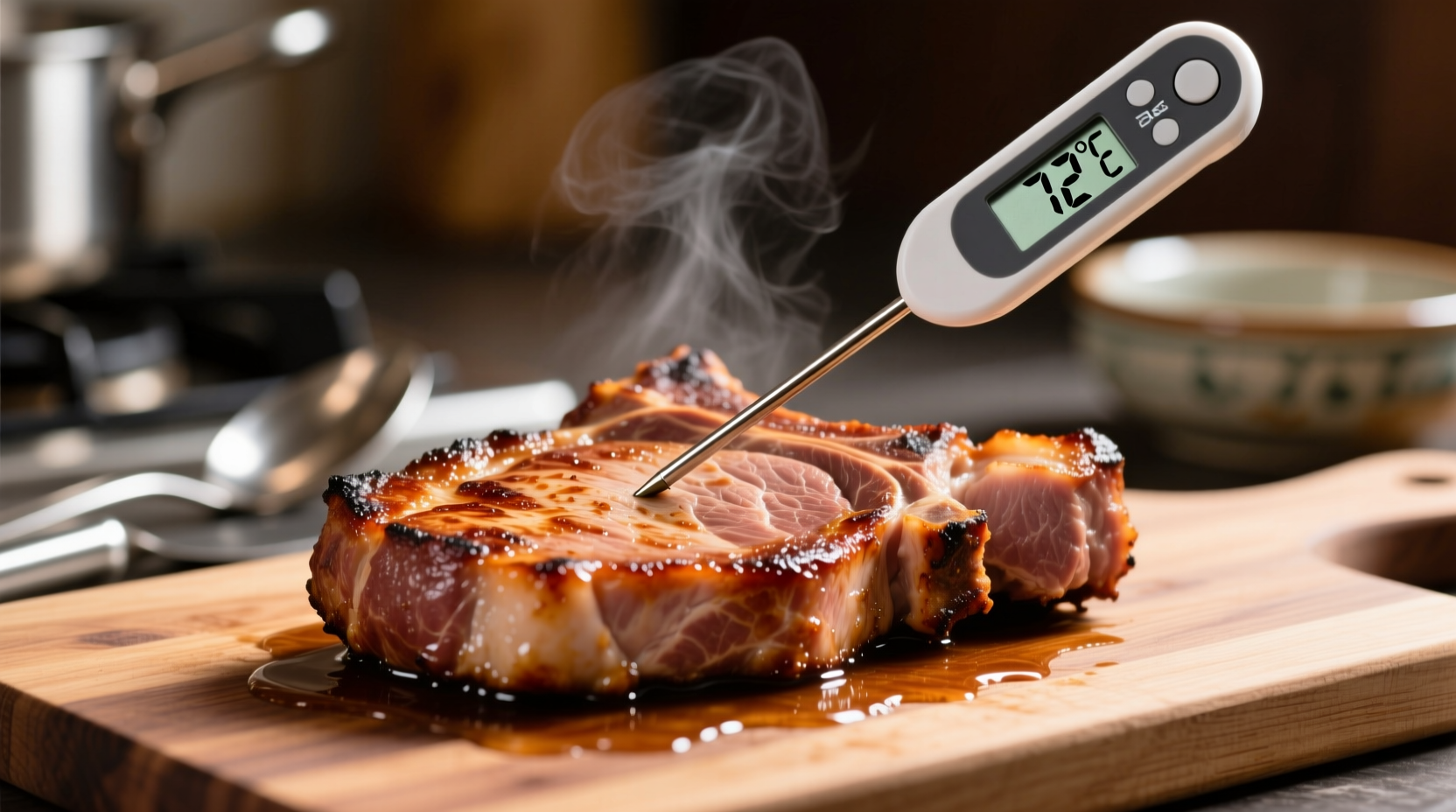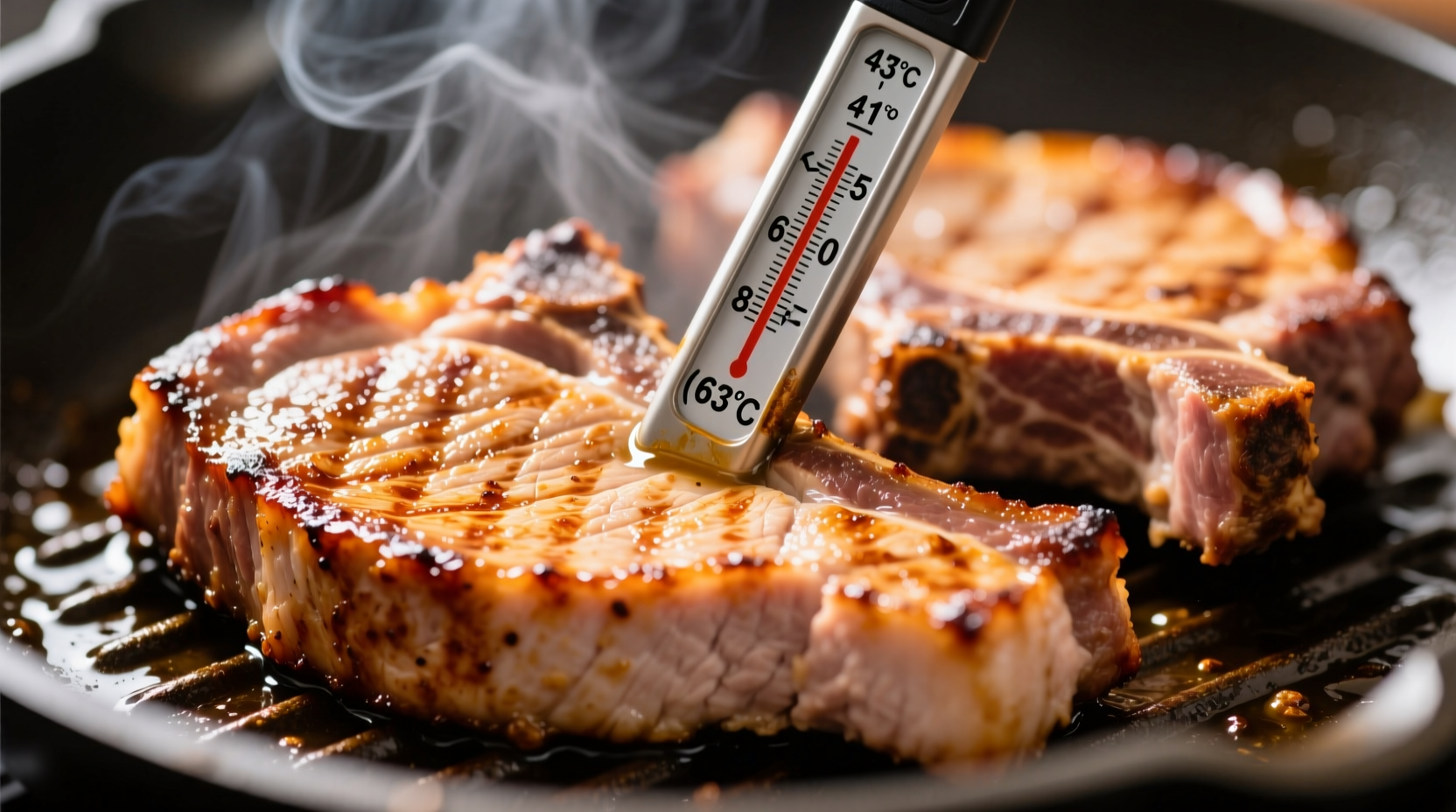The USDA recommends cooking pork to a safe internal temperature of 145°F (63°C), followed by a 3-minute rest period. This applies to whole cuts like pork chops, tenderloin, and roasts. Ground pork should reach 160°F (71°C).
For years, home cooks were told to cook pork until it was well-done and completely white. That outdated advice has changed dramatically, thanks to modern farming practices and updated food safety guidelines. Today, properly cooked pork can be slightly pink in the center while still being completely safe to eat. Understanding the right temperature isn't just about safety—it's the key to juicy, flavorful pork every time.
Why Temperature Matters: The Food Safety Revolution
When you search "cook pork to what temp," you're really asking how to balance safety with quality. The critical threshold of 145°F (63°C) isn't arbitrary—it's the temperature at which Trichinella spiralis, the parasite historically associated with undercooked pork, is instantly destroyed. Modern pork production has virtually eliminated this risk, but the temperature standard remains for comprehensive food safety.
The USDA's Food Safety and Inspection Service (FSIS) updated their recommendation from 160°F to 145°F in 2011 after extensive research confirmed that lower temperatures with a rest period provide equivalent safety while preserving moisture and flavor. This change reflects decades of improved pork production standards and better understanding of food microbiology.
| Year | Recommended Pork Temperature | Rest Time | Reason for Change |
|---|---|---|---|
| Pre-2011 | 160°F (71°C) | None | Conservative approach to eliminate trichinosis risk |
| 2011-Present | 145°F (63°C) | 3 minutes | Scientific evidence shows equal safety with better texture |
Your Essential Thermometer Guide
Guessing doneness by color or texture leads to overcooked, dry pork 70% of the time according to culinary research. A reliable instant-read thermometer is your most important kitchen tool for perfect pork. Here's how to use it correctly:
- Placement matters: Insert the probe into the thickest part of the meat, avoiding bone, fat, or gristle
- Check multiple spots: Especially with irregular cuts, take readings from several areas
- Wait for stabilization: Hold the thermometer steady until the reading stops changing (about 10-15 seconds)
- Calibrate regularly: Test your thermometer in ice water (should read 32°F/0°C) or boiling water (212°F/100°C)
For continuous monitoring during roasting, use an oven-safe probe thermometer that alerts you when the target temperature is reached. This prevents unnecessary oven opening that can extend cooking time.

Temperature Guidelines by Cut
While 145°F is the standard for whole muscle cuts, different pork preparations have specific requirements:
- Pork tenderloin: 145°F (63°C) – This lean cut dries out quickly if overcooked
- Pork chops: 145°F (63°C) – Thicker chops benefit from the 3-minute rest period
- Pork shoulder (for pulled pork): 195-205°F (90-96°C) – Requires higher temperature to break down connective tissue
- Ground pork: 160°F (71°C) – No rest time needed as bacteria could be distributed throughout
- Pork ribs: 190-203°F (88-95°C) – Temperature where collagen melts for tender results
Remember that pork continues cooking during the rest period—a phenomenon called carryover cooking. Remove pork from heat when it's 5°F below your target temperature to account for this rise.
Visual and Tactile Indicators (When Thermometer Isn't Available)
While a thermometer is always best, these secondary indicators can help verify doneness:
- Color: Properly cooked pork may have a faint pink hue in the center, not the gray-white of overcooked meat
- Juices: Should be clear or faintly pink, not red or bloody
- Texture: Firm but yielding to gentle pressure, not hard or rubbery
- Internal appearance: Opaque throughout with no raw-looking areas
These visual cues become more reliable with practice, but they're no substitute for a thermometer when food safety is concerned. The National Pork Board confirms that slight pinkness at 145°F is perfectly normal and safe (pork.org).
Avoiding Common Temperature Mistakes
Even experienced cooks make these temperature-related errors:
- Mistake: Testing temperature too early Solution: Wait until the last 10-15 minutes of estimated cooking time
- Mistake: Not accounting for carryover cooking Solution: Remove pork from heat 5°F below target temperature Mistake: Ignoring rest time Solution: Always allow 3 minutes for whole cuts to redistribute juices
- Mistake: Using an uncalibrated thermometer Solution: Test accuracy monthly with ice water method
Professional chefs emphasize that proper resting time is as crucial as the cooking temperature itself. Cutting into pork immediately after cooking causes up to 40% of the juices to escape, resulting in dry, less flavorful meat.
Special Considerations for Different Cooking Methods
The ideal temperature can vary slightly depending on your cooking technique:
- Grilling: Higher heat requires more frequent temperature checks to prevent overshooting
- Sous vide: Can be cooked precisely at 140-145°F for extended periods, then seared
- Slow cooking: Must reach 145°F eventually, but the low-and-slow method ensures tenderness
- Smoking: Follow the same temperature guidelines, but expect longer cooking times
For food safety verification, the USDA Food Safety and Inspection Service maintains that any pork cooked to 145°F with 3-minute rest is safe, regardless of cooking method.
What Happens If You Get the Temperature Wrong
Understanding the consequences of incorrect temperatures helps reinforce why precision matters:
- Below 140°F: Potential survival of harmful bacteria like Salmonella and Staphylococcus aureus
- 140-145°F: Safe with proper rest time—optimal for texture and safety
- 145-150°F: Still safe, beginning to lose some moisture but acceptable
- Above 155°F: Increasingly dry texture as proteins tighten and expel moisture
Unlike poultry, pork doesn't require higher temperatures for safety due to modern farming practices. The Food Safety Authority of Ireland confirms that 145°F with rest time provides equivalent safety to higher temperatures (fsai.ie).
Practical Temperature Tips for Perfect Pork Every Time
Implement these professional techniques for consistently excellent results:
- Bring pork to room temperature (30-60 minutes) before cooking for more even heating
- Use a thermometer with a thin probe for small cuts like tenderloin
- For roasts, insert the thermometer horizontally through the side
- When in doubt, cook to 145°F and let rest—you can always cook a little more if needed
- Record temperatures of different cuts to build your personal reference guide
Remember that altitude affects cooking temperatures—at elevations above 3,000 feet, you may need to increase cooking time by 25% while maintaining the same target temperature. This regional consideration ensures food safety regardless of where you're cooking.











 浙公网安备
33010002000092号
浙公网安备
33010002000092号 浙B2-20120091-4
浙B2-20120091-4